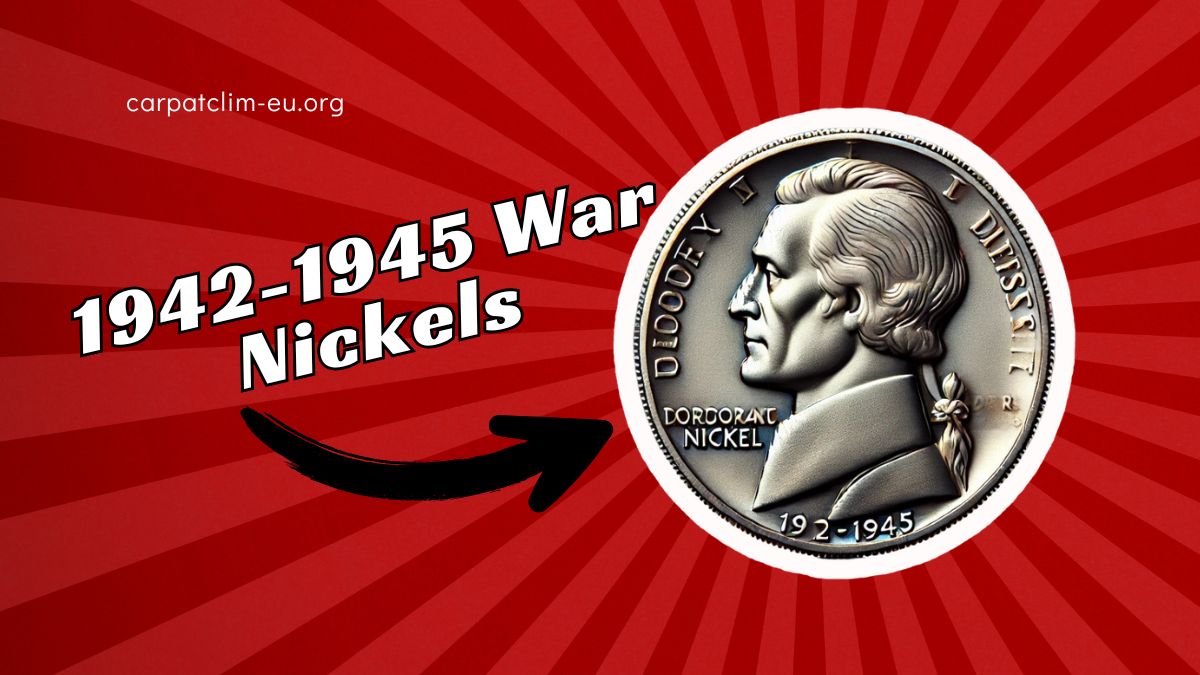US Coins
Rare 1942-1945 War Nickels Worth More Than You Imagine

During World War II, the United States faced a critical shortage of nickel, a vital metal for wartime production. To conserve this resource, the U.S. Mint altered the composition of the five-cent coin, resulting in the 1942-1945 “war nickels.”
These coins, composed of 56% copper, 35% silver, and 9% manganese, not only played a crucial role in the war effort but have also become valuable collectibles today.
Understanding War Nickels
War nickels are distinguishable by their unique composition and a prominent mint mark above Monticello on the reverse side.
This mint mark indicates the coin’s silver content, setting them apart from standard nickels minted before and after this period.
Composition and Identification
The wartime composition of these nickels includes:
- 56% Copper
- 35% Silver
- 9% Manganese
The silver content is a key factor in their current value. Each war nickel contains approximately 0.0563 troy ounces of silver. As of February 10, 2025, the melt value of silver is approximately $1.81 per coin.
Mintage and Rarity
The mintage figures for war nickels vary by year and mint mark. Notably, the 1943-P “3 Over 2” variety is particularly rare and highly sought after by collectors.
Mintage Figures and Values of 1942-1945 War Nickels
| Year | Mint Mark | Mintage | Numismatic Value Range (USD) |
|---|---|---|---|
| 1942 | P | 57,900,600 | $1.25 – $6.90 |
| 1942 | D | 13,938,000 | $1.25 – $19.00 |
| 1942 | S | 32,900,000 | $1.25 – $6.10 |
| 1943 | P | 271,165,000 | $1.25 – $4.70 |
| 1943 | D | 15,294,000 | $1.25 – $4.20 |
| 1943 | S | 104,060,000 | $1.25 – $4.40 |
| 1944 | P | 119,150,000 | $1.25 – $5.50 |
| 1944 | D | 32,309,000 | $1.25 – $7.00 |
| 1944 | S | 21,640,000 | $1.25 – $6.00 |
| 1945 | P | 119,408,100 | $1.25 – $4.80 |
| 1945 | D | 37,158,000 | $1.25 – $4.90 |
| 1945 | S | 58,939,000 | $1.25 – $3.50 |
Note: Values are approximate and can vary based on coin condition and market demand.
Identifying Valuable Varieties
Certain varieties of war nickels are particularly valuable:
- 1943-P “3 Over 2”: This variety features a faint “2” visible beneath the “3” in the date, resulting from a die overdate.
- 1943-P Doubled Die Obverse: Known as the “Doubled Eye” nickel, it exhibits doubling in Jefferson’s eye.
- 1945-P Doubled Die Reverse: This variety shows doubling on the letters of “MONTICELLO” on the reverse.
Identifying these varieties requires careful examination and, often, magnification.
Grading and Condition
The condition of a coin significantly impacts its value. Coins are graded on a scale from 1 to 70, with higher grades commanding higher prices.
For example, a 1943-P “3 Over 2” nickel in MS-65 condition can be worth substantially more than one in lower grades.
Collecting and Investing
For collectors and investors, war nickels offer a tangible connection to history and the potential for appreciation in value. Due to their silver content, they also serve as a hedge against inflation and economic uncertainty.
The 1942-1945 war nickels are more than just currency; they are historical artifacts with significant value. Whether you’re a seasoned collector or a casual enthusiast, understanding these coins’ composition, rarity, and varieties can enhance your appreciation and investment in numismatics.
FAQs
What makes 1942-1945 war nickels valuable?
Their unique composition, especially the 35% silver content, and certain rare varieties make them valuable to collectors.
How can I identify a war nickel?
Look for a large mint mark above Monticello on the reverse side.
Are all 1942-1945 nickels made of silver?
No, only those minted from 1942 to 1945 with the large mint mark above Monticello contain silver.
-
US Coins1 day ago
The 1917-S Buffalo Nickel: A Rare Gem Fetching Over $60K
-
Social Security2 days ago
Social Security- February 19 Payment for Beneficiaries Born from the 11th to the 20th
-
Social Security2 weeks ago
Who Will Qualify The $2000 Social Security Payment, February 12?
-
US Coins2 weeks ago
Rare 1943 Copper Lincoln Wheat Penny Worth $2.5 Million, Still In Circulation
-
Personal Finance2 weeks ago
1964 JFK Half-Dollar Coins Fetch Over $150,000 At Auction
-
Latest News1 day ago
$1,500 Child Stimulus Direct Deposits In February 2025- Eligibility And Payment Details
-
Social Security2 weeks ago
2 Reasons Your Social Security Payments Could Be Reduced as an SSDI Beneficiary
-
Latest News2 weeks ago
Social Security Payments Up To $5,108 Begin This Week – Check Your Eligibility Now!